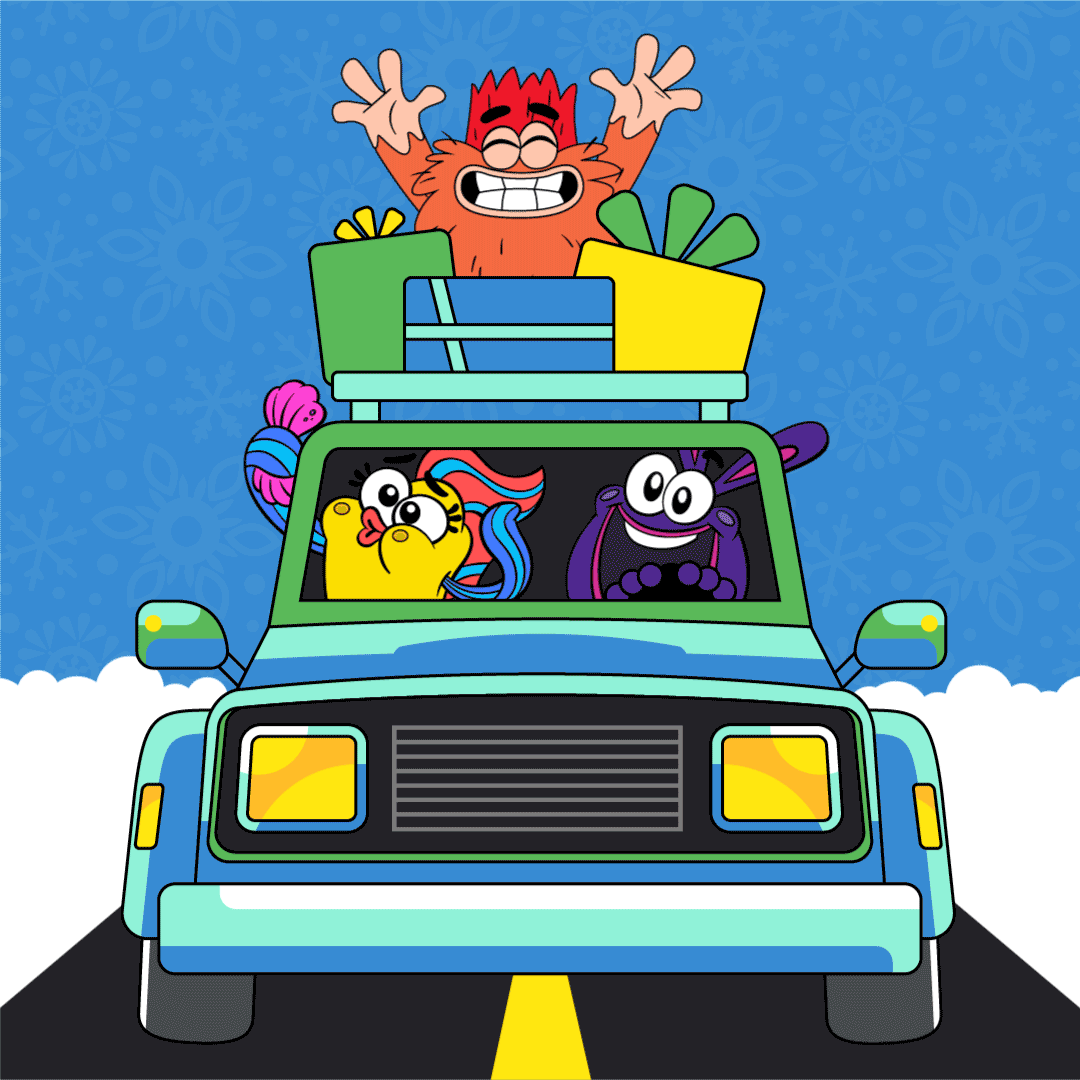Exploring Holidays Around the World
From Chicago to Shanghai, the holidays are a special time for people all over the world. And different people celebrate in different ways for different reasons. ~ Jason Postelwait

Few people know that better than Moose Fabio, who has been busy traveling the world to find out more about world customs during the holidays in his new video Fabio's Holiday Moose Caboose. In it, Moose Fabio dodges and ducks obstacles as he learns about Christmas, Hanukkah, Chinese New Year, and Kwanzaa.
Since these are landmark celebrations for many around the world, we thought we’d take a moment and explore the history of these special customs.
Christmas
Many of us in the United States are well acquainted with the religious origins of Christmas around the birth of Christ. But did you know early Europeans celebrated during the winter solstice when the worst of winter was behind them and they could look forward to longer days and extended hours of sunlight? The Norse celebrated Yule from December 21, the winter solstice, through January. In celebration of the return of the sun, fathers and sons would bring home large logs, which they would set on fire. The people would feast until the log burned out, which could take up to 12 days. The Norse believed that each spark from the fire represented a new pig or calf that would be born during the coming year. This is where we get “yuletide” and “yule log.” Source: The History Channel
Hanukkah
The eight-day Jewish celebration known as Hanukkah or Chanukah, commemorates the rededication during the second century B.C. of the Second Temple in Jerusalem, where according to legend Jews had risen up against their Greek-Syrian oppressors in the Maccabean Revolt. Hanukkah, which means “dedication” in Hebrew, begins on the 25th of Kislev on the Hebrew calendar and usually falls in November or December. Often called the Festival of Lights, the holiday is celebrated with the lighting of the menorah, traditional foods, games and gifts.
According to the Talmud, one of Judaism’s most central texts, Judah Maccabee and the other Jews who took part in the rededication of the Second Temple witnessed what they believed to be a miracle. Even though there was only enough untainted olive oil to keep the menorah’s candles burning for a single day, the flames continued flickering for eight nights, leaving them time to find a fresh supply. This wondrous event inspired the Jewish sages to proclaim a yearly eight-day festival. Source: The History Channel
Chinese New Year
Tied to the Chinese lunar calendar, the holiday was traditionally a time to honor household and heavenly deities as well as ancestors. It was also a time to bring family together for feasting. With the popular adoption of the Western calendar in 1912, the Chinese joined in celebrating January 1 as New Year’s Day.
The ancient Chinese lunar calendar, on which Chinese New Year is based, functioned as a religious, dynastic and social guide. Oracle bones inscribed with astronomical records indicate that the calendar existed as early as 14th century B.C., when the Shang Dynasty was in power.
The calendar’s structure wasn’t static: It was reset according to which emperor held power and varied from one region to another.
In preparation for the holiday, houses were thoroughly cleaned to rid them of “huiqi,” or inauspicious breaths, which might have collected during the old year. Cleaning was also meant to appease the gods who would be coming down from heaven to make inspections. Ritual sacrifices of food and paper icons were offered to gods and ancestors. People posted scrolls printed with lucky messages on household gates and set off firecrackers to frighten evil spirits. Elders gave out money to children. In fact, many of the rites carried out during this period were meant to bring good luck to the household and long life to the family—particularly to the parents. Source: The History Channel
Kwanzaa
Dr. Maulana Karenga, professor and chairman of Black Studies at California State University, Long Beach, created Kwanzaa in 1966. After the Watts riots in Los Angeles, Dr. Karenga searched for ways to bring African Americans together as a community. He founded US, a cultural organization, and started to research African “first fruit” (harvest) celebrations. Karenga combined aspects of several different harvest celebrations, such as those of the Ashanti and those of the Zulu, to form the basis of Kwanzaa.
The name Kwanzaa is derived from the phrase “matunda ya kwanza” which means “first fruits” in Swahili. Each family celebrates Kwanzaa in its own way, but celebrations often include songs and dances, African drums, storytelling, poetry reading, and a large traditional meal. On each of the seven nights (starting December 26th and ending January 1st), the family gathers and a child lights one of the candles on the Kinara (candleholder), then one of the seven principles is discussed. The principles, called the Nguzo Saba (seven principles in Swahili) are values of African culture which contribute to building and reinforcing community among African-Americans. Kwanzaa also has seven basic symbols which represent values and concepts reflective of African culture. An African feast, called a Karamu, is held on December 31.
The candle-lighting ceremony each evening provides the opportunity to gather and discuss the meaning of Kwanzaa. The first night, the black candle in the center is lit (and the principle of umoja/unity is discussed). One candle is lit each evening and the appropriate principle is discussed. Source: The History Channel
The holidays are a wonderful time to reflect, spend time with loved ones, spread good will and service, learn about our past, honor our ancestors, and remember what makes us unique as people and a collective of cultures. Happy Wintertime from all of us at GoNoodle, to your family.




